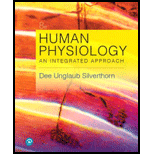
a.
To explain: The similarities and dissimilarities between mastication and deglutition.
Introduction: The primary function of the
b.
To explain: The similarities and dissimilarities between microvilli and villi.
Introduction: The primary function of the digestive system is the movement of nutrients, water, and ions from the external environment to the internal environment of the body. The digestive system completes its function with the help of four processes- digestion, absorption, secretion, and motility. The cell membrane and the intestine play a major role in the processes of the digestive system.
c.
To explain: The similarities and dissimilarities among peristalsis, segmental contractions, migrating motor complex, and mass movements.
Introduction: The motility is the process of movement of material through the GI tract as a result of muscle contraction. The motility fulfills the two purposes of the digestion process. One purpose is the moving of food from the mouth to the anus, and another purpose is the mixing of food mechanically to break it into uniformly small particles. The gastrointestinal tract is mostly composed of single-unit smooth muscles. A different region of GI tracts exhibits different types of contraction.
d.
To explain: The similarities and dissimilarities between chyme and feces.
Introduction: The primary function of the digestive system is the movement of nutrients, water, and ions from the external environment to the internal environment of the body. The digestive system completes its function with the help of four processes- digestion, absorption, secretion, and motility. The chyme and feces are formed during the different processes of the digestive system.
e.
To explain: The similarities and dissimilarities between short reflexes and long reflexes.
Introduction: Motility and secretion are the two primary regulated functions of the four gastrointestinal processes. The motility is regulated so that the food gets proper time to digest in the intestine. The secretion is regulated so that the appropriate digestive enzymes can break down food for absorption. The enteric nervous system (ENS) regulates motility, secretion, and growth of the digestive tract.
f.
To explain: The similarities and dissimilarities among submucosal plexus, myenteric plexus, and vagus nerve.
Introduction: The enteric nervous system (ENS) regulates motility, secretion, and growth of the digestive tract. The enteric nervous system (ENS) works in isolation as well as in association with the central nervous system (CNS).
g.
To explain: The similarities and dissimilarities among cephalic, gastric, and intestinal phases of digestion
Introduction: The digestive process is composed of a series of reactions involving digestive hormones and juices as a result of which complex molecules are broken down into smaller ones. The digestion process starts from the oral cavity.
Want to see the full answer?
Check out a sample textbook solution
Chapter 21 Solutions
Human Physiology: An Integrated Approach Plus Mastering A&P with Pearson eText -- Access Card Package (8th Edition) (What's New in Human Physiology)
- In as much detail as possible, hand draw a schematic diagram of the hypothalamic-pituitary- gonad (HPG) axis in the human male. Be sure to include all the relevant structures and hormones. You must define all abbreviations the first time you use them. Please include (and explain) the feedback loops.arrow_forwardA negligence action was brought by a mother against a hospital on behalf of her minor daughter. It alleged that when the mother was 13 years of age, the hospital negligently transfused her with Rh-positive blood. The mother's Rh-negative blood was incompatible with and sensitized by the Rh-positive blood. The mother discovered her condition 8 years later during a routine blood screening ordered by her healthcare provider in the course of prenatal care. The resulting sensitization of the mother's blood allegedly caused damage to the fetus, resulting in physical defects and premature birth. Did a patient relationship with the transfusing hospital exist?arrow_forward18. Watch this short youtube video about SARS CoV-2 replication. SARS-CoV-2 Life Cycle (Summer 2020) - YouTube.19. What is the name of the receptor that SARS CoV-2 uses to enter cells? Which human cells express this receptor? 20. Name a few of the proteins that the SARS CoV-2 mRNA codes for. 21. What is the role of the golgi apparatus related to SARS CoV-2arrow_forward
- State the five functions of Globular Proteins, and give an example of a protein for each function.arrow_forwardDiagram of check cell under low power and high powerarrow_forwarda couple in which the father has the a blood type and the mother has the o blood type produce an offspring with the o blood type, how does this happen? how could two functionally O parents produce an offspring that has the a blood type?arrow_forward
- What is the opening indicated by the pointer? (leaf x.s.) stomate guard cell lenticel intercellular space none of thesearrow_forwardIdentify the indicated tissue? (stem x.s.) parenchyma collenchyma sclerenchyma ○ xylem ○ phloem none of thesearrow_forwardWhere did this structure originate from? (Salix branch root) epidermis cortex endodermis pericycle vascular cylinderarrow_forward
- Identify the indicated tissue. (Tilia stem x.s.) parenchyma collenchyma sclerenchyma xylem phloem none of thesearrow_forwardIdentify the indicated structure. (Cucurbita stem l.s.) pit lenticel stomate tendril none of thesearrow_forwardIdentify the specific cell? (Zebrina leaf peel) vessel element sieve element companion cell tracheid guard cell subsidiary cell none of thesearrow_forward
- Essentials of Pharmacology for Health ProfessionsNursingISBN:9781305441620Author:WOODROWPublisher:Cengage
 Fundamentals of Sectional Anatomy: An Imaging App...BiologyISBN:9781133960867Author:Denise L. LazoPublisher:Cengage Learning
Fundamentals of Sectional Anatomy: An Imaging App...BiologyISBN:9781133960867Author:Denise L. LazoPublisher:Cengage Learning  Medical Terminology for Health Professions, Spira...Health & NutritionISBN:9781305634350Author:Ann Ehrlich, Carol L. Schroeder, Laura Ehrlich, Katrina A. SchroederPublisher:Cengage Learning
Medical Terminology for Health Professions, Spira...Health & NutritionISBN:9781305634350Author:Ann Ehrlich, Carol L. Schroeder, Laura Ehrlich, Katrina A. SchroederPublisher:Cengage Learning





